Aaron T. Hess
Tuning-free multi-coil compressed sensing MRI with Parallel Variable Density Approximate Message Passing
Mar 08, 2022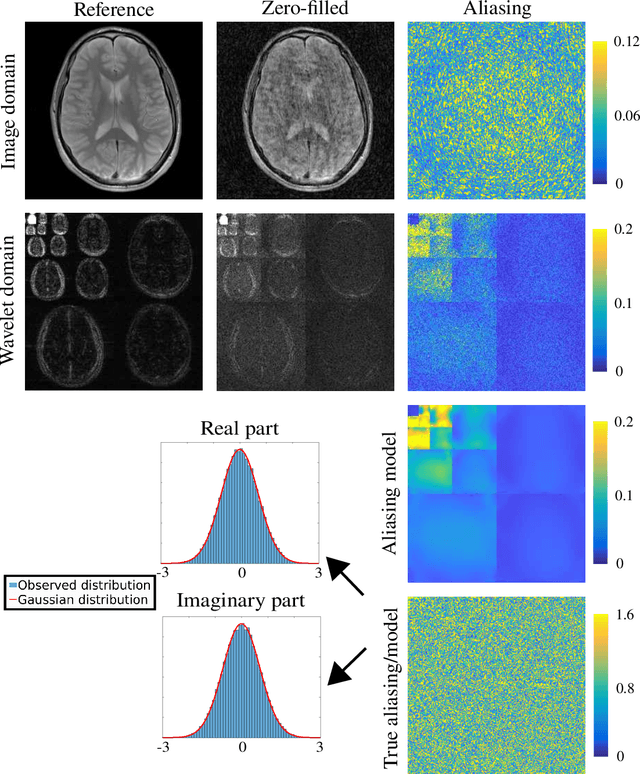
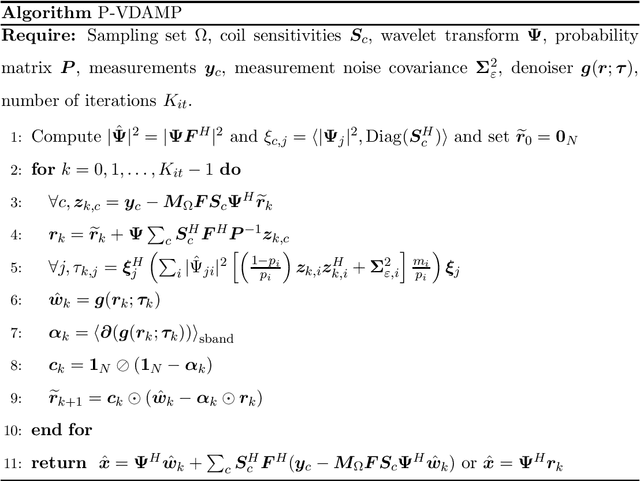
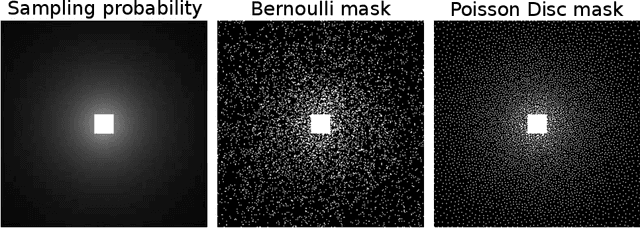
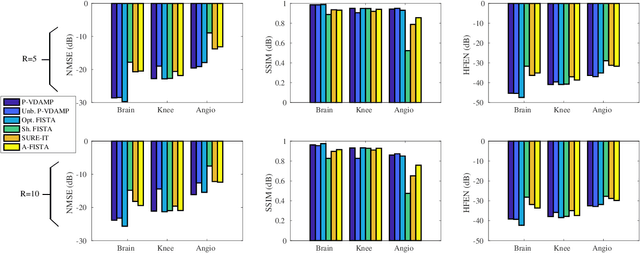
Abstract:Purpose: To develop a tuning-free method for multi-coil compressed sensing MRI that performs competitively with algorithms with an optimally tuned sparse parameter. Theory: The Parallel Variable Density Approximate Message Passing (P-VDAMP) algorithm is proposed. For Bernoulli random variable density sampling, P-VDAMP obeys a "state evolution", where the intermediate per-iteration image estimate is distributed according to the ground truth corrupted by a Gaussian vector with approximately known covariance. State evolution is leveraged to automatically tune sparse parameters on-the-fly with Stein's Unbiased Risk Estimate (SURE). Methods: P-VDAMP is evaluated on brain, knee and angiogram datasets at acceleration factors 5 and 10 and compared with four variants of the Fast Iterative Shrinkage-Thresholding algorithm (FISTA), including two tuning-free variants from the literature. Results: The proposed method is found to have a similar reconstruction quality and time to convergence as FISTA with an optimally tuned sparse weighting. Conclusions: P-VDAMP is an efficient, robust and principled method for on-the-fly parameter tuning that is competitive with optimally tuned FISTA and offers substantial robustness and reconstruction quality improvements over competing tuning-free methods.
Optimization of Undersampling Parameters for 3D Intracranial Compressed Sensing MR Angiography at 7 Tesla
Apr 09, 2021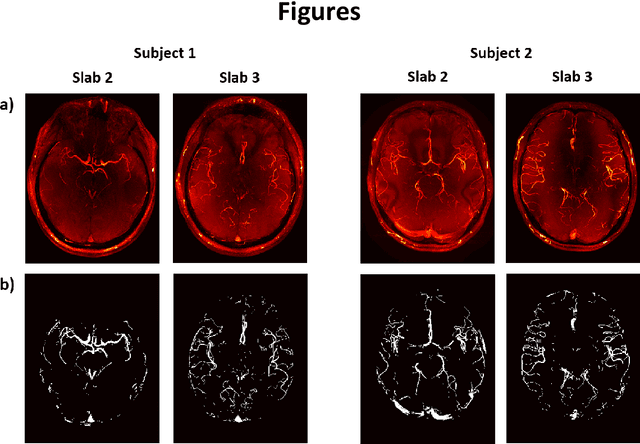
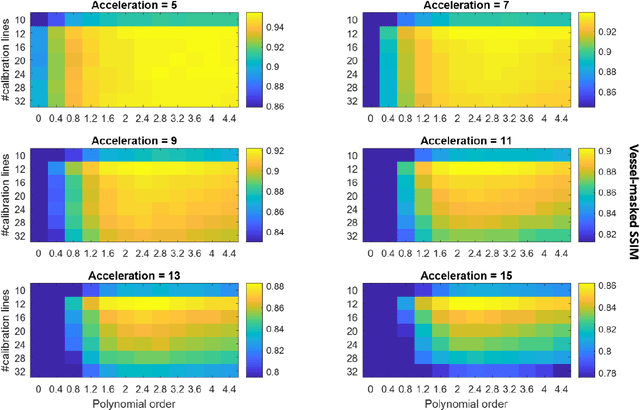


Abstract:Purpose: 3D Time-of-flight (TOF) MR Angiography (MRA) can accurately visualize the intracranial vasculature, but is limited by long acquisition times. Compressed sensing (CS) reconstruction can be used to substantially accelerate acquisitions. The quality of those reconstructions depends on the undersampling patterns used in the acquisitions. In this work, optimized sets of undersampling parameters using various acceleration factors for Cartesian 3D TOF-MRA are established. Methods: Fully-sampled datasets acquired at 7T were retrospectively undersampled using variable-density Poisson-disk sampling with various autocalibration region sizes, polynomial orders, and acceleration factors. The accuracy of reconstructions from the different undersampled datasets was assessed using the vessel-masked structural similarity index. Results were compared for four imaging volumes, acquired from two different subjects. Optimized undersampling parameters were validated using additional prospectively undersampled datasets. Results: For all acceleration factors, using a fully-sampled calibration area of 12x12 k-space lines and a polynomial order of around 2-2.4 resulted in the highest image quality. The importance of sampling parameter optimization was found to increase for higher acceleration factors. The results were consistent across resolutions and regions of interest with vessels of varying sizes and tortuosity. In prospectively undersampled acquisitions, using optimized undersampling parameters resulted in a 7.2% increase in the number of visible small vessels at R = 7.2. Conclusion: The image quality of CS TOF-MRA can be improved by appropriate choice of undersampling parameters. The optimized sets of parameters are independent of the acceleration factor.
 Add to Chrome
Add to Chrome Add to Firefox
Add to Firefox Add to Edge
Add to Edge